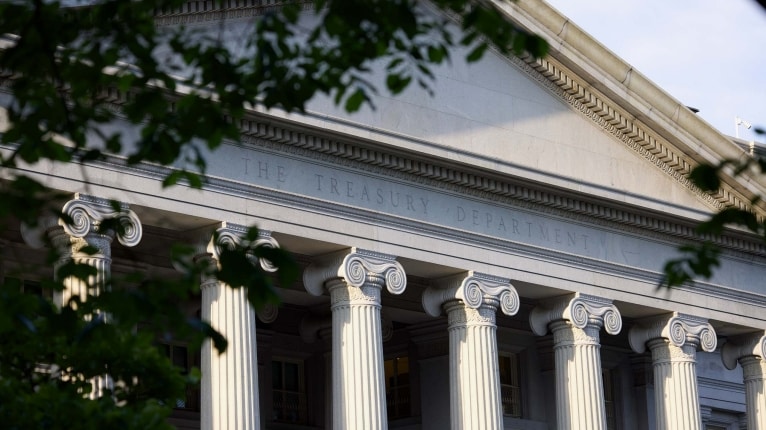Investing Essentials Investing in ETFs: What to consider
- Exchange-traded funds (ETFs) offer exposure to a wide variety of asset classes, providing an efficient way to achieve diversification while retaining optionality.
- ETFs are highly liquid and are cost-effective, especially when compared to alternatives such as mutual funds, which can only be traded at market close and typically charge higher fees.
- Due to the wide array of ETFs available, defining your investment objectives is a crucial step to ultimately picking an ETF that fits your goals.

Investing in exchange-traded funds (ETFs) has become a popular way for individuals to invest their money. ETFs provide a convenient way of diversifying your investments across a variety of asset classes like stocks, bonds and commodities. While ETFs can offer numerous advantages, it's important to understand the pros and cons of ETFs before deciding if they are right for your financial goals.
In this article, we will explore what ETFs are, discuss the main benefits and drawbacks, and outline key factors to consider when investing in ETFs. Understanding the nuances of ETF investing and aligning an ETF to your specific investment objectives can help lead to better-informed decisions. With the wide array of ETFs available today, evaluating if they suit your risk tolerance and financial goals is an important step.
What are ETFs?
Exchange-traded funds (ETFs) are investment vehicles that offer a convenient, affordable way to access a broad range of assets based on your goals and financial objectives.
An ETF can be thought of as an investing playlist curated by a sophisticated DJ. An ETF, like a well-crafted playlist, offers you a wide range of investments that are selected to fit a certain mood – or investment objective. Whether you’re looking for growth (investments that will increase in value), income (from dividends) or a mix of the two, there is likely a type of ETF strategy that can match your financial aspirations.1
Common types of ETFs
- Equity: Exposure to the stocks of various companies, to mirror the returns of a stock sector or index
- Fixed income: Exposure to bonds and/or other debt securities, providing you with exposure to corporate, municipal and government bonds
- Commodity: Exposure to commodities like silver, gold, oil and corn, to track the performance of the underlying commodities in the ETF
- Sector-oriented: Exposure to your specific sector of interest, such as health care, technology or consumer staples
- Thematic: Exposure to your themes of interest, such as ESG (environment, social and governance), disruptive technologies or artificial intelligence
Pros and cons of investing in ETFs
Before choosing an ETF, it is important to understand the pros and cons of investing in ETFs, which include:
Potential advantages of ETFs
- Diversification: ETFs offer you the opportunity to efficiently diversify your portfolio without selecting individual stocks, bonds or commodities
- Transparency: Most ETFs will reveal the underlying portfolio of holdings, offering you a chance to know what you’re investing in
- Lower cost: Considering that ETFs are often passively managed, they tend to have lower operating costs and fees when compared to actively managed mutual funds
Potential disadvantages of ETFs
- Tracking issues: ETFs may not precisely track their underlying index due to fees or sampling (e.g., it may not be possible to hold every security in the index due to various reasons, leading to a potential tracking variance)
- Lack of complete control: While you usually have access and can view the individual securities that make up your ETF portfolio, you will not have control over the trading of individual stocks or bonds within the ETF2
How to choose an ETF to invest in
ETFs are convenient, have many advantages and come in many flavors. But how do you choose? Before purchasing shares in an ETF, define your investment objectives and ensure they’re aligned with the ETF of your choice. It is also important to have a nuanced understanding of alternative ETFs and how to compare them.3
Get up to $700
When you open a J.P. Morgan Self-Directed Investing account, you get a trading experience that puts you in control and up to $700 in cash bonus.
While consulting a financial advisor is a good place to start, here are some useful aspects to consider:
- Risk tolerance: Are you comfortable gaining exposure to a highly volatile sector? Perhaps buying an equity ETF tracking a technology index in an emerging market is too risky for you due to the inherently risky nature of the technology sector. Instead, if preserving your capital and minimizing volatility is your objective, a fixed income ETF or an equity ETF tracking a defensive industry like health care may be more appropriate. While risk appetite varies by person, for individuals approaching their retirement age, opting for a more conservative ETF is likely to align more closely with their investment goals.
- Performance history: How closely does the ETF track the performance of its underlying index, and how does that change over time? An ETF’s track record is not limited to gains and losses driven by the fluctuation of the underlying index price. It’s also important to check that the ETF does what it claims to do: consistently tracks its underlying index.
- Underlying assets: One of the merits of ETFs is their transparency. It is important to know the composition of your ETF. What percentage is in large-cap stocks? What percentage is in stocks of one sector versus another? How much is your exposure to emerging countries? These factors can have a significant impact on the volatility and potential returns of an ETF.
- ETF structure: The structure can impact the level of volatility, tracking and cost of managing the ETF. A structure can either be physical (directly owning the assets of an index) or synthetic (attempting to track the performance of an index via derivatives). Understanding the ETF structure can help inform your decisions when evaluating different ETFs.
- Cost: What is the operating expense ratio (OER), and what is the commission associated with your ETF? Comparing costs across different ETF options can be a useful part of the evaluation process.4
Comparing ETFs to other investment types
To assess whether ETFs best suit your investment criteria and make informed decisions, it is often necessary to explore comparable alternatives recognizing that each brings its array of potential advantages and attributes.
Mutual funds
Mutual funds pool money from multiple investors to purchase a diverse portfolio of various securities like stocks and bonds. Mutual funds tend to be actively managed by professional fund managers. Given that they are usually passively managed, ETFs tend to be more cost-effective when compared to most mutual funds. Compared to ETFs, mutual funds are:
- Less liquid, since trades are only executed when the market closes
- Often attempt to beat the market through active management
- Have a potentially higher expense ratio due to active management
- May have required minimum investments
Index funds
Index funds are mutual funds or ETFs that track a specific market index, like the S&P 500 for example. These funds aim to replicate the chosen index’s performance by matching their portfolios to the securities (and their proportions) in their chosen index.
Given they are usually passively managed, ETFs tend to be more cost-effective when compared to most mutual funds. However, opting for a more passive mutual fund, such as a mutual fund that is an index fund, can potentially lower the cost of mutual funds.
While ETFs and mutual funds have many shared benefits, namely convenient diversification, it is important to understand the differences and pick the option that best suits your investment goals.5
|
ETFs |
Mutual funds |
Index funds |
|---|---|---|
|
Trading |
||
|
Can be traded throughout the day just like stocks |
Traded once a day, after market close |
Depends on structure (ETF vs. mutual fund) |
|
Management |
||
|
Passively managed in most cases |
Actively managed by professional in most cases fund managers |
Usually passively managed |
|
Fees |
||
|
Tend to be lower due to passive management |
Generally higher due to active management |
Typically lower, similar to non-index ETFs |
|
Minimums |
||
|
Generally, no minimum required investment |
May have a minimum required investment |
Depends on structure (ETF vs. mutual fund) |
|
ETFs |
Can be traded throughout the day just like stocks |
Passively managed in most cases |
Tend to be lower due to passive management |
Generally, no minimum required investment |
|---|---|---|---|---|
|
Mutual funds |
Traded once a day, after market close |
Actively managed by professional in most cases fund managers |
Generally higher due to active management |
May have a minimum required investment |
|
Index funds |
Depends on structure (ETF vs. mutual fund) |
Usually passively managed |
Typically lower, similar to non-index ETFs |
Depends on structure (ETF vs. mutual fund) |
The bottom line
So, what is an ETF? An ETF is a collection of assets, typically tracking a specific index or industry, that can be traded like an individual stock. ETFs help many investors diversify their portfolios and help manage risk by increasing their exposure to a wider array of assets.
ETFs can track specific market indexes, commodities or any other specific array of investments. Just keep in mind that ETFs are, like any other investment, subject to the ups and downs of the market. Speaking with a qualified financial advisor can help provide more guidance on whether ETFs are right for you.
If you want to explore more yourself, check out J.P. Morgan Self-Directed Investing. If you would prefer to work with a J.P. Morgan advisor, reach out or stop into one of our Chase branches and can help manage risk.
FAQs
How many exchange-traded funds are there?
There are thousands of ETFs available in the U.S., and even more globally.6 This number continues to grow annually as new ETFs are launched to meet market trends and investor demands.
Are ETFs better than stocks?
The primary advantage of ETFs over single stocks is ETFs are inherently diversified by bundling many stocks into one security, which can reduce risk. In contrast, single stocks provide exposure only to a single company. This lack of diversification can increase risk.
Are mutual funds traded on exchanges?
No, mutual funds are not traded on exchanges the way stocks or ETFs are. Instead, they’re purchased directly from the fund company or broker. Additionally, transactions for mutual funds are processed once a day, after the market closes. This differs from ETFs, which can be bought and sold throughout the day.
Who issues ETFs?
The investment management companies that create, sell and market exchange-traded funds are known as ETF sponsors. ETF sponsors also manage the operations of their funds, including the creation and redemption of shares.7
How are ETF shares created?
ETF shares are created when an Authorized Participant in the fund – typically a large financial institution – deposits a determined basket of securities and cash in exchange for a block of shares known as a creation unit. The Authorized Participant is then free to sell those ETF shares to investors on the stock market. Authorized Participants can also redeem ETF shares in exchange for the corresponding basket of securities or cash value.8
What are leveraged and inverse ETFs?
A leveraged ETF aims to return a multiple – e.g., two times or three times – on the daily performance of the index it tracks. An inverse ETF seeks to provide the opposite of its benchmark’s daily performance. An inverse ETF is similar to a short position, allowing shareholders to profit from or hedge against market downturns. However, most leveraged and inverse ETFs reset every day, meaning they work as intended on a daily basis but diverge from intended returns over longer periods. Given significant risks, these ETFs are best suited for experienced investors.9
Invest your way
Not working with us yet? Find a J.P. Morgan Advisor or explore ways to invest online.
Megan Werner
Editorial staff, J.P. Morgan Wealth Management
Editorial staff, J.P. Morgan Wealth Management
Megan Werner is a member of the J.P. Morgan Wealth Management (JPMWM) editorial staff. Prior to joining the JPMWM team, she held various freelance, contract and agency positions as a content writer across a range of industries. In additi ...More
Footnotes
-
1
J.P. Morgan, “4 questions to ask when you select a mutual fund or ETF” (January 2023)
-
2
Investor.gov. “Updated Investor Bulletin: Exchange-Traded Funds (ETFs)” (February 2023)
-
3
Investor.gov, “Mutual Funds and ETFs – A Guide for Investors” (December 2016)
-
4
Investor.gov. “Updated Investor Bulletin: Exchange-Traded Funds (ETFs)” (February 2023)
-
5
Ibid.
-
6
Financial Industry Regulatory Authority (FINRA), “Exchange-Traded Funds and Products”
-
7
Ibid.
-
8
Ibid.
-
9
Investor.gov. “Updated Investor Bulletin: Leveraged and Inverse ETFs.” (August 2023)



